When considering off the grid living, do want to know how much land you need to get you started? If you want to start living off of the land, then these numbers should help.
Off The Grid | Land Usage Tips
Living off the grid can be tough. I should know, since I’ve been a homesteader for years now. There are a lot of things you have to consider: land, animals, plants, and so much more… So what would you need to start living off of the land you own? It takes careful planning and of course, time. You can’t just go out one day and say that you won’t depend on anything or anyone else to live. So to get you started, here’s a very informative infographic from visual.ly that will help you with what you need in living off the grid, should you have a family of four. Read on!

How Big A Backyard Do You Need To Live Off of the Land?
More and more people are turning away from grocery stores and utility companies in favor of their own backyard. The idea of becoming self-sufficient is an alluring one, but exactly how much land would you need? Assuming a family of four, here are the land requirements to sustain yourself for one year.
Average U.S. Roof Size: 2000 sq. ft.
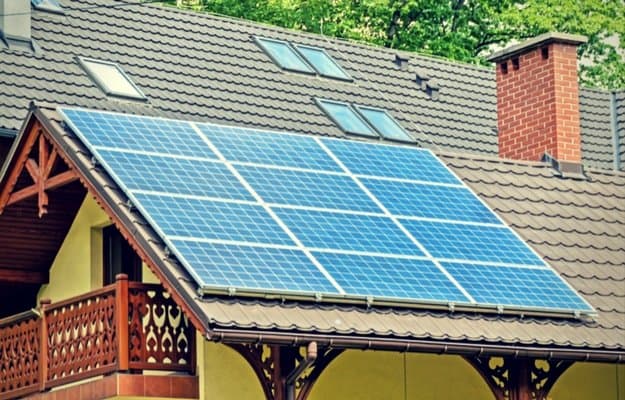
1 year of electricity requires 375 sq. ft.
According to the EIA, the average home in the U.S. will consume 11,040 kWh of electricity in one year. It may fluctuate higher or lower depending on your heating or cooling needs. Assuming the house is facing south and there are 7 hours of sunlight, it would take about 5 solar panels (using panels of average efficiency) to fulfill those energy requirements, which would take about 375 sq. ft. of roof space.
Dietary Requirements
9,200 Calories for a Family of Four per Day Requires 76,666 sq. ft.
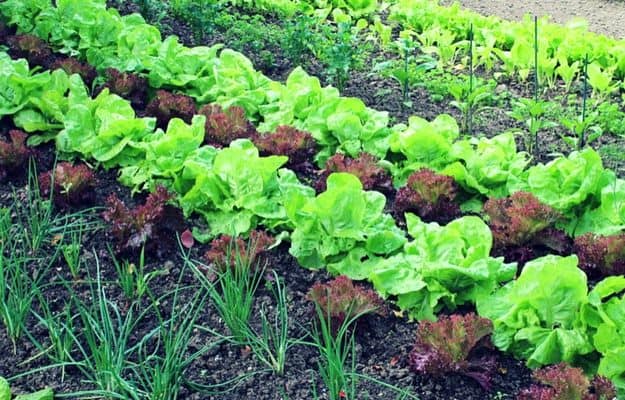
Maintaining a vegetarian diet of 2300 calories per person, per day requires .44 acres per person. This includes fruits, grains and of course, vegetables. In an ideal setting, suitable farm land can also grow fruit trees to provide a well-rounded diet. Some vegetables require much more land than others, including potatoes and cucumber.
If You Eat Meat, Eggs and/or Dairy, 1 Year of Meat Requires 207 sq. ft.
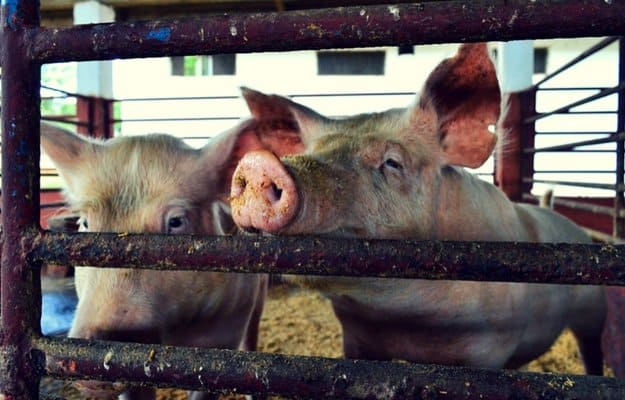
If you wish to add a little bacon to your self-sustained diet, then starting off with 3 pigs can feed a family of four twice per week, for a year. if you wish to add some piglets to the mix allow 9 square feet per pig or piglet.
1 Year of Dairy Requires 100 sq. ft.

If you wish to add dairy to your diet forget about getting a cow, for they are not land-efficient. Think about a Nubian goat instead. A Nubian goat can produce 1,844 lbs of milk a year. Keep in mind that goats, like cows, do require some grazing land and companionship.
1 Year of Eggs Requires 65 sq. ft.

A hen can lay anywhere from 80 to 300 eggs in one year. The average American eats about five eggs a week. For a family of four eating 1000 eggs in a year, it would require 13 birds to put scrambled eggs on the table in the morning.
1 Year of Wheat Requires 12, 012 sq. ft.
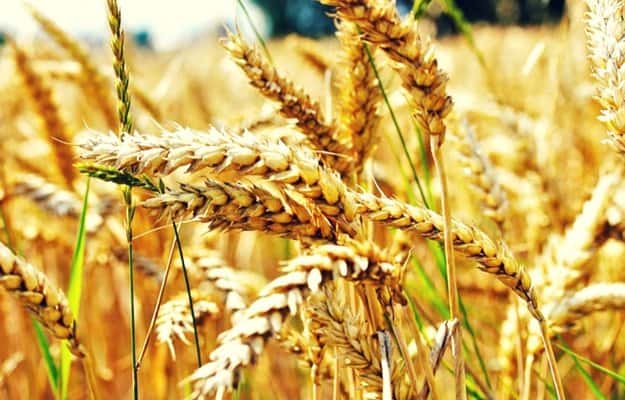
The average person eats 1.5 pounds of wheat a week. In order to maintain that diet of wheat, you must allow for at least 3,003 sq. ft. of wheat per person. If some of this wheat is going to livestock, adjust for the extra.
1 Year of Corn Requires 2, 640 sq. ft.
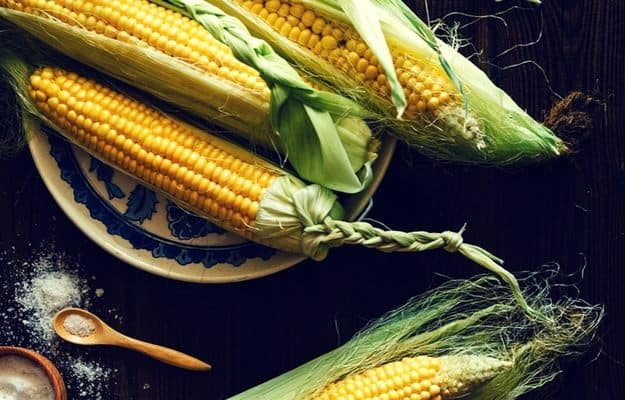
Corn is a multifunctional produce that is necessary when growing animals in your backyard farm. However, corn is not land-efficient. You would need at least 2,640 sq ft. of corn to produce enough for your family and animals. We did not include corn in our final calculations, assuming instead that you'd prefer to buy bushels of corn feed (a bushel of corn is 56 pounds) for less than $5 each.
You Will Need a Backyard That is at Least 89, 050 sq. ft. This is about 2 Acres.

If a family of four is willing to buy flour instead of growing their own wheat, they'd only need about 1.5 acres to have a mixed diet of veggies, eggs, meat, and milk.
You can maintain a vegetarian diet and start living off vegetables, or get 207 square feet more and have room to grow your own meat. It really isn't as complicated as you think. With careful planning and a bit of hard work, you can start being self-sufficient in no time. Happy Homesteading!
Do you think you'll start living off the grid? Did you find this land usage helpful and interesting? Let us know in the comments section below.
Follow us on Facebook, Instagram, Pinterest, and Twitter!
This post was originally published on December 2015 and has been updated for quality and relevancy.


Well I’m not off grid yet but working towards that goal. I’m sorry to say that this article is not only short of info for what I expected but the infographic is not practical. It is not an average off grid perception. Most off grid families live on much less in terms of housing which takes up a lot of space in the infographic. So if the house was about a 1/3 or more less in size then you wouldn’t need as much land. And also the livestock of choice is questionable. Chickens are #1 in livestock choice but other animals would be a less amount then what is stated like 3 pigs take up a lot of room and most off gridders don’t have that many at one time. So if you calculate the space with less home size and smaller livestock that is a tremendous amount left over. I live on 1 acre and I am only utilizing 2 thirds of it and I have a large garden that I can expand and will this year. I have 12 chickens and 1 rooster. I am getting goats this spring and I already have set up their space. I have 4 dogs that have their own space also and my house is just over 1200 sq. ft. and I have plenty of living space plus a good storage room inside for stocking up and storing my bounty. I plan to fence off the remaing 1/3 of my land this spring to grow fruit, nut trees and whatever else my daughter wants to plant. She is 11 and very resouceful in the garden and taking good care of the chickens. She is making a list of what she wants to plant with the trees, she is mostlty imto bushes like berries.
But my point is that you can live quite comfortable on less than 2 acres. You just don’t need a a large house because your homestead is your house too. You spend more time outside then in so live small and live happy with what you have. Remember as Becky says @ Becky’s Homestead “start small start small start small” ( http://beckyshomestead.com/how-to-start-a-homestead/ ) and you can be happy with what you have whether you’re rich or poor, just do your research and be resourceful on a small plot of land and if you plan it right you can live happy on what you have.
Hi have you thought about a miniture Jersey cow?
Great milk, cheese and butter very easy to look after. I have had goats and they are a lot more trouble 🤣
If you want beef run a bullock beef cow in with her ,slaughter the beef cow at 12 months time it for good summer grass then you won’t need to worry about winter feed for him and the difference in yeald is very low.
We are planning on making the jump to a more or less retirement homestead in about 5 years, with a pair of friends of our own age, and I want to add a younger family to help with the more physical work. We plan on actually having 1 full acre of solar as a “business” selling the electricity back to the grid for money. Our chickens will be encouraged to do their scratching for grit and bugs underneath as we own a lovely parcel of land in western central Nevada [with the original agricultural deep well.] as the acre will be fenced in. We have kept poultry before, our modest flock was usually 16-24 chickens, and half a dozen turkeys. We already have the blueprints for the pair of homes and needed work structures on site, including what we jokingly call ‘the bunker’ which is a 10’x20′ walk in freezer, 10’x10′ walk in refrigerator and 10’x20′ walk in root cellar, underground [with a 10’x10′ vestibule] to aid in insulation. We have our eyes on the neighboring 5 acre package, it is going to be going up on the tax delinquent auction block [which is how we purchased ours] so we can expand our growing area.
The only problem with some of the advice I keep reading is *goats* – many people dislike or are actively allergic to goat milk, and it is rarely mentioned the equipment needs for the planting and harvesting of crops like wheat – unless you want to emulate the happy harvesting scene of the middle ages, with the landsman striding across the field with his mighty thews slashing down the wheat with his scythe, and the women and children scurrying along behind gathering the cropped plants, you need to do an article about what small ‘orchard’ tractors and what pulled equipment is suitable for the smallholder. [I should mention I am a historical reenactor, and I had scurried along gathering in the sheaves, and it is frelling HARD work, stoop labor of the worst, though harvesting strawberries and tomatoes on the multiple acre field is right up there.
Thank you so much this was very helpful!